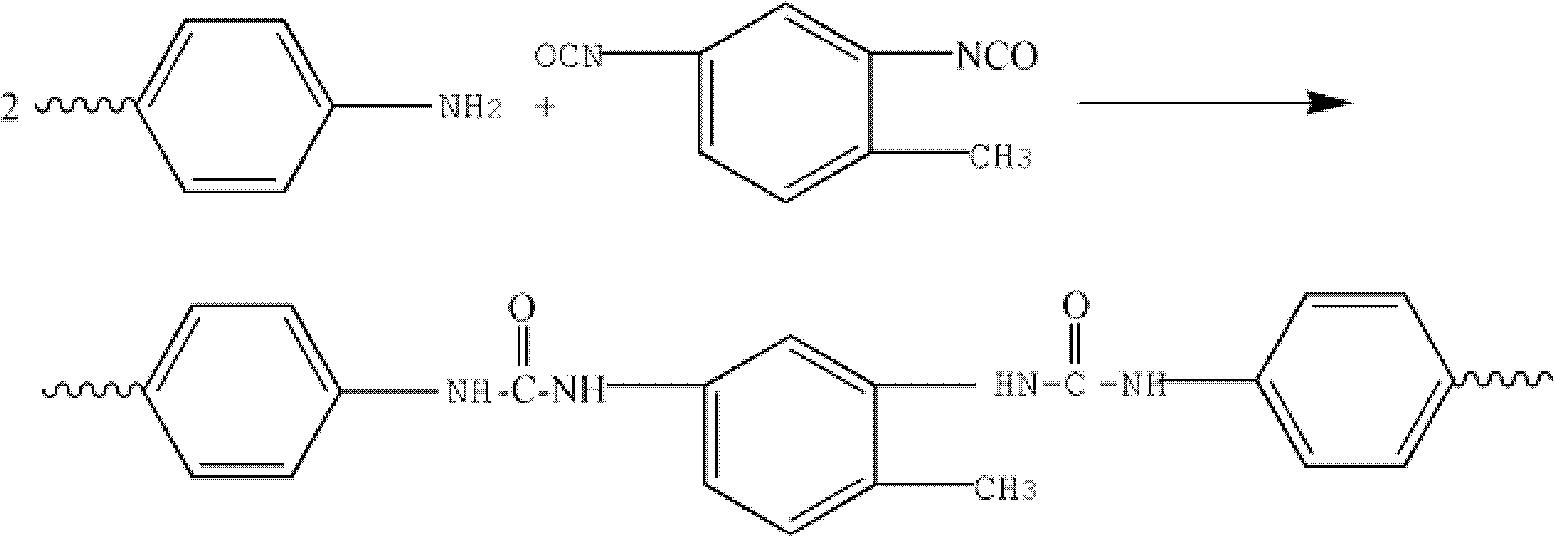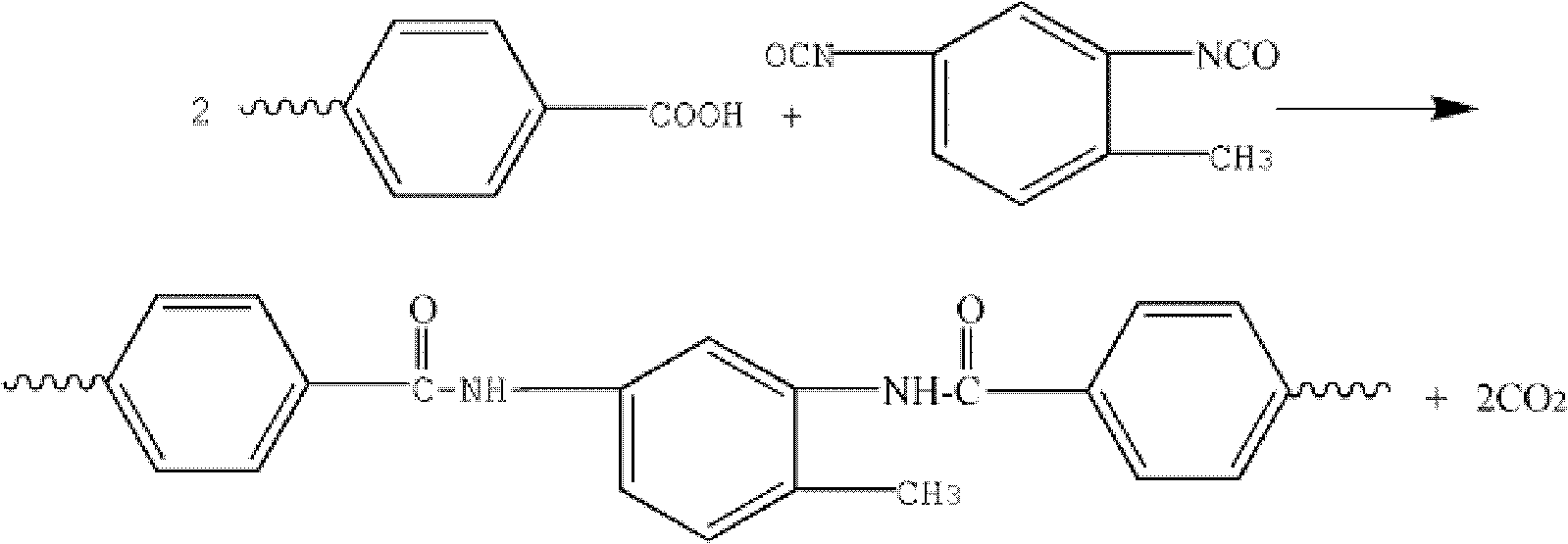Method for modifying interior and surface of aramid fiber through isocyanate in supercritical CO2
A kind of aramid fiber and isocyanate technology, which is applied in fiber processing, textile and papermaking, etc., can solve the problems of fiber damage, long reaction time, toxic solvent, etc., and achieve the effect of short reaction time, controllable reaction and simple separation.
- Summary
- Abstract
- Description
- Claims
- Application Information
AI Technical Summary
Problems solved by technology
Method used
Image
Examples
Embodiment 1
[0026] The interior and surface of the aramid fiber were exposed to supercritical CO 2 TDI modification in
[0027] (1) Cleaning of aramid fiber surface:
[0028] Put the acetone solution in the three-necked flask, and put the aramid fiber in the Soxhlet extractor. Heat anhydrous acetone to 70°C, clean the surface of the aramid fiber after the acetone is condensed and refluxed, take out the fiber after 24 hours, and dry it in vacuum for later use;
[0029] (2) Aramid fiber in supercritical CO 2 Chain extension bridging and grafting reaction with isocyanate:
[0030] Add a certain amount of TDI to the autoclave, and then put a certain amount of aramid fiber that has been cleaned on the surface into the autoclave (the mass ratio of isocyanate to aramid fiber is 1:1, no contact with TDI); close the autoclave, and remove the air After that, a certain amount of CO was charged into the kettle 2 , heating the system to 90°C, and the pressure reaches 15MPa, making the system in s...
Embodiment 2
[0053] The interior and surface of the aramid fiber were exposed to supercritical CO 2 HDI modification in
[0054] (1) Cleaning of aramid fiber surface:
[0055] Put the acetone solution in the three-necked flask, and put the aramid fiber in the Soxhlet extractor. Heat the acetone to 70°C, clean the surface of the aramid fiber after the acetone is condensed and refluxed, take out the fiber after 24 hours, and dry it in vacuum for later use;
[0056] (2) Aramid fiber in supercritical CO 2 Chain extension bridging and grafting reaction with isocyanate:
[0057] Add a certain amount of HDI to the autoclave, and then put a certain amount of surface-cleaned aramid fiber into the autoclave (the mass ratio of isocyanate to aramid fiber is 1:1, and it does not contact with TDI); close the autoclave and remove the air After that, a certain amount of CO was charged into the kettle 2 , heating the system to 90°C, and the pressure reaches 13MPa, making the system in supercritical CO...
PUM
 Login to View More
Login to View More Abstract
Description
Claims
Application Information
 Login to View More
Login to View More - R&D
- Intellectual Property
- Life Sciences
- Materials
- Tech Scout
- Unparalleled Data Quality
- Higher Quality Content
- 60% Fewer Hallucinations
Browse by: Latest US Patents, China's latest patents, Technical Efficacy Thesaurus, Application Domain, Technology Topic, Popular Technical Reports.
© 2025 PatSnap. All rights reserved.Legal|Privacy policy|Modern Slavery Act Transparency Statement|Sitemap|About US| Contact US: help@patsnap.com



